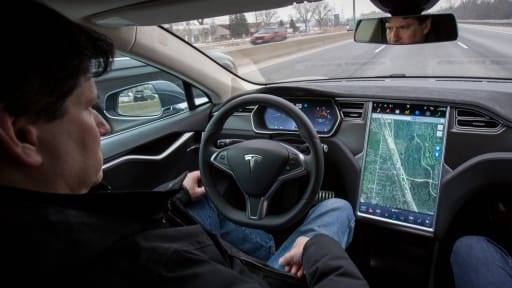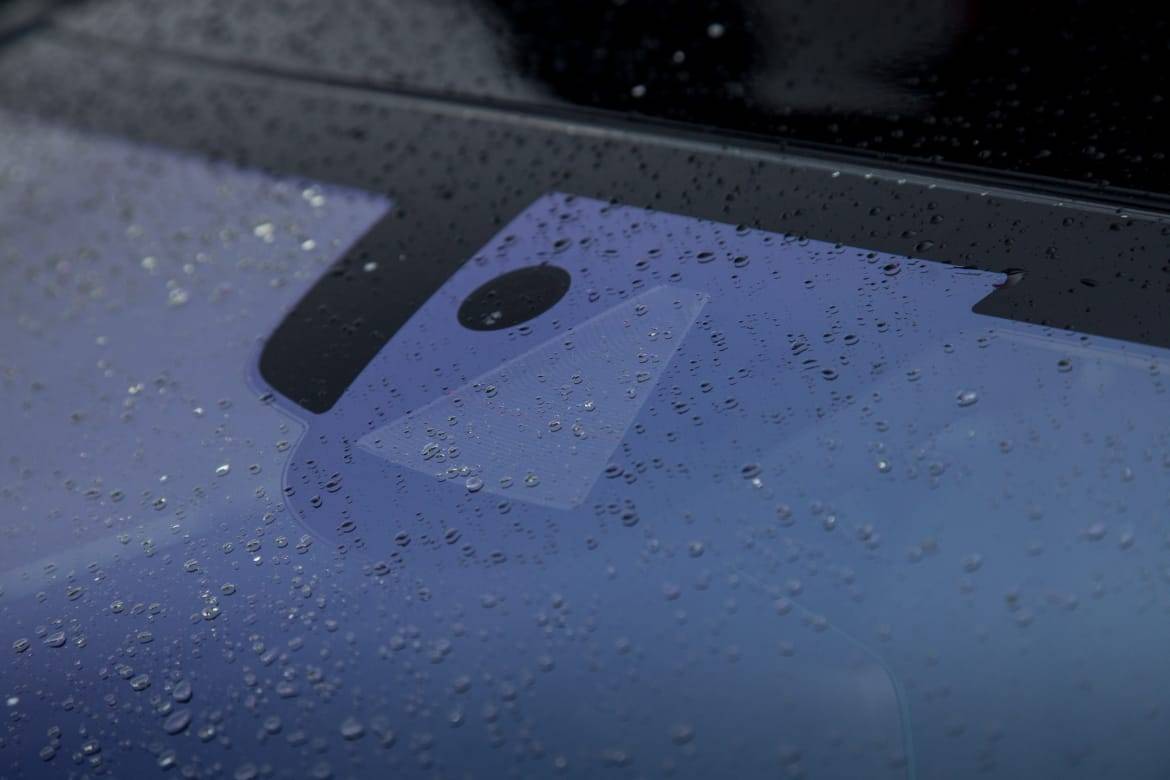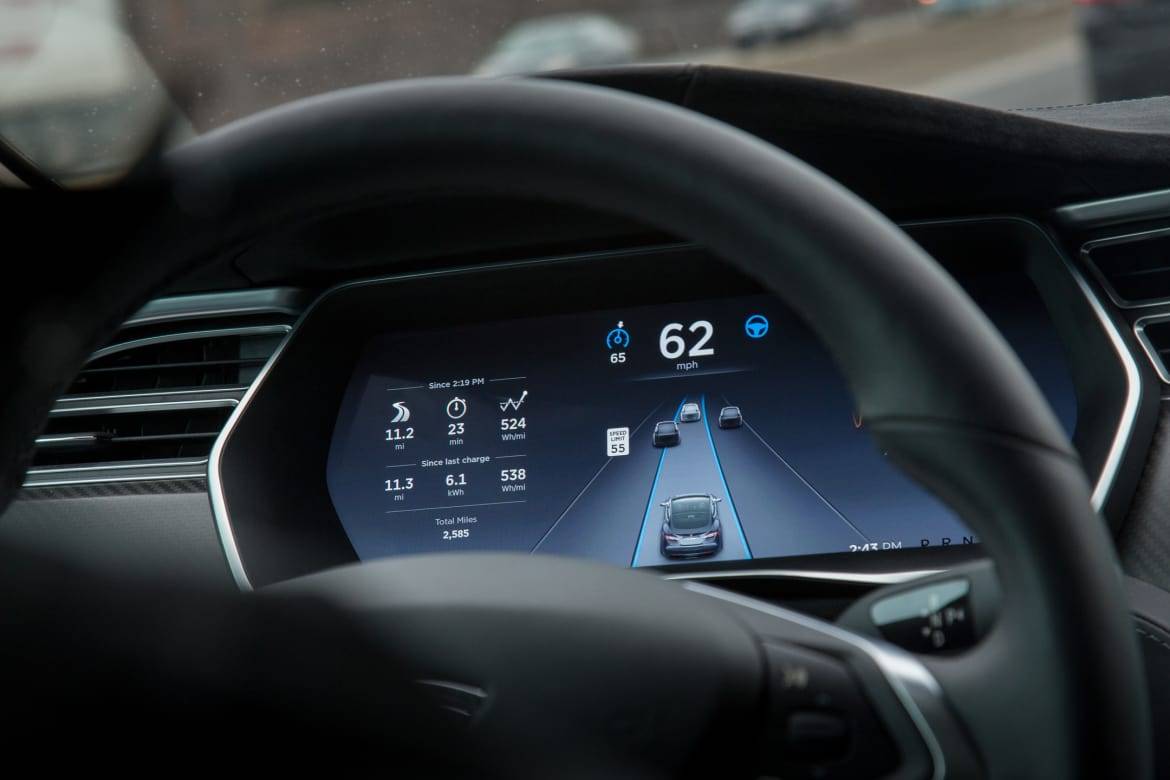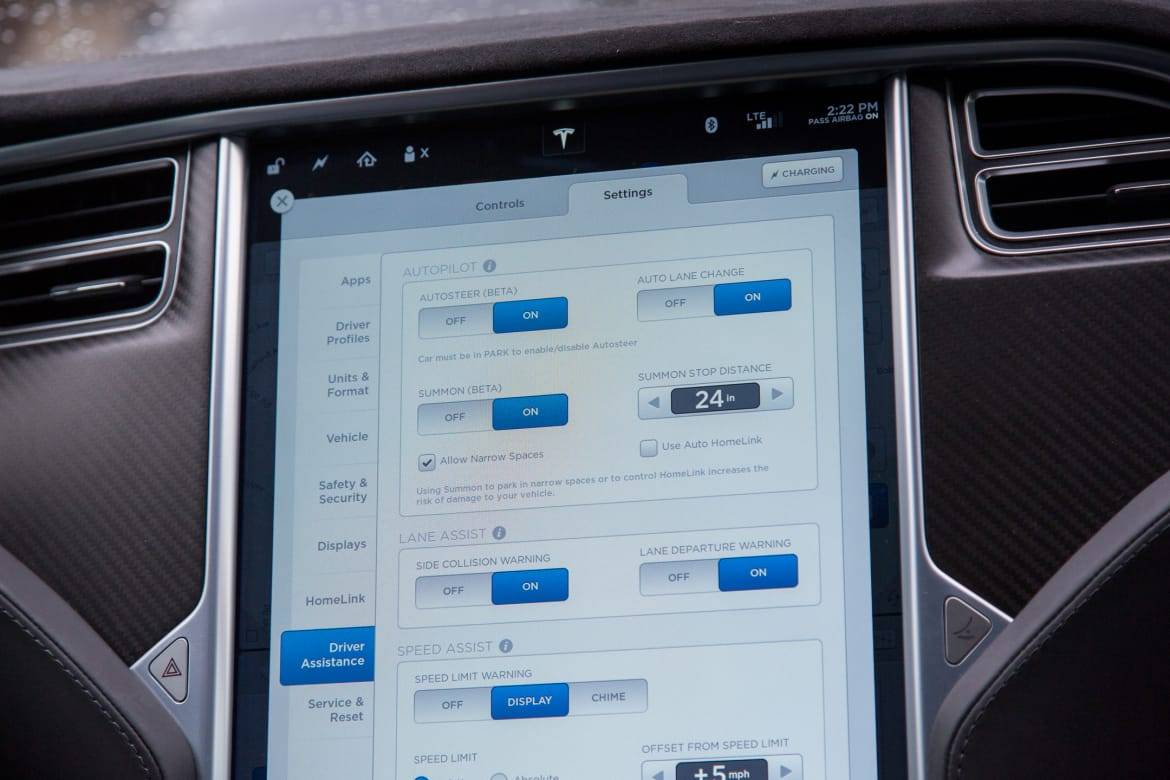Tesla Autopilot: First Test


CARS.COM — Unbeknownst to most consumers, many established automakers and their suppliers have been researching vehicle autonomy since before Tesla Motors existed, and semi-autonomous safety features have been working their way into cars from many brands for several years. So why is Tesla getting so much attention for the Autopilot feature it rolled out in October 2015? To find out how well it works, and how it may differ from other automakers’ semi-autonomous features, I went for a spin in a 2016 Model S P90D equipped with the option, which costs $2,500.
Related: Tesla Owners Can Summon Car With Smartphone
Without question, the external elements seem the same as in other cars with active-safety features: a host of sensors to determine what’s around the car. Where some cars use a forward-looking camera or radar unit, the most effective ones I’ve experienced employ both, as does the Model S. They’re supplemented by 12 visible sonar sensor buttons in the Model S’ front and rear bumpers that, in lieu of additional radar, also allow it to “see” to the back and sides.

What is Autopilot?
Autopilot is primarily a combination of adaptive cruise control — which maintains a preset distance from a car in front of you even as its speed changes — and an enhanced version of lane departure prevention Tesla calls Autosteer. I say enhanced because ordinary “lane keep” systems prevent wandering but typically aren’t designed to steer full time, and they also vary in how they correct. Some jog the wheel intermittently to nudge the car back into its lane, an action meant to attract the driver’s attention while correcting course, serving solely as a safety net — not an attempt at automated steering. Some systems steer more gradually yet the car pinballs left and right between the lines. Some even let you wander over the line before correcting, while some stay between them.
Tesla’s Autopilot doesn’t correct wandering; it simply steers for you. Autosteer may be the best lane holding I’ve experienced, or certainly among the best. The Mercedes-Benz S-Class is another model with lane departure prevention that centers the car in its lane admirably and, like the Model S, works in tandem with adaptive cruise control from zero to highway speeds. With a top speed of 90 mph, Tesla’s Autopilot can ease the fatigue of highway traffic ranging from stop-and-go to wide open.
Conditions weren’t the most challenging during my test, but the Model S faithfully held its lane through the gradual curves typical of an interstate. It also accelerated and decelerated appropriately; anyone who watched the car would assume it was being piloted by a careful driver. All the while, the car’s large instrument panel display showed a live graphic of my car, its lane and other cars around it. Some cars with lane departure features have a pair of rudimentary lane-line indicators, and, similarly, some vehicles with adaptive cruise control show an icon of one car, straight ahead, in their gauge cluster display, but none of the graphics I’ve seen are as detailed, large and visible as Autopilot’s.

One could argue that you shouldn’t be looking at a display while driving, but viewing it while Autopilot is driving really helps you appreciate what it’s doing and everything it sees and takes into consideration. The lane-marker highlights assure you — more effectively than in other cars — that the camera sees divisions between lanes. The only real failing I noticed was when I was in control: This graphic is the only place to view when a car is in your blind spot, designated by a wave shape by your car icon’s haunches. Having a light on or near the side mirrors seems a better location for blind spot warning.
With Autopilot switched on, this isn’t an issue, because you can flip the turn signal and the Model S will find its opportunity and change lanes for you. All you have to do is turn the signal back off afterward. Is this a necessary addition? Not really, but it shows you how much closer the technology is to changing lanes without being prompted. I quickly learned to time my lane changes wisely, though, because the car will make an aggressive move and dive into a small gap. It’s probably safe, but it could easily be viewed as cutting someone off, and I suspect blaming such a move on your $100,000 car wouldn’t satisfy anyone you’ve ticked off.

What has Autopilot got that others don’t?
Tesla’s Autopilot is clearly a refined operator that’s a glimpse of autonomy beyond reactive safety features. So is Autopilot truly the most autonomy you can get in a car? It sure seems that way, and here’s why:
- It stays on: Though text appears on the Model S’ display when you first activate Autosteer, instructing you to keep your hands on the wheel, the function keeps working even if you don’t do so. When similar features I’ve used sense your hands have been removed for anywhere from five to 20 seconds, depending on the car, they stop steering for you, providing only a tone and flashing graphic to warn you. In one regard, Tesla is taking a big risk in providing indefinite Autosteer ahead of laws expressly allowing it, but as I conveyed in 10 Best and Worst Safety Options, a safety feature that works only some of the time doesn’t seem like the best idea either.
- It changes lanes: Though I consider this an add-on feature that’s more impressive than useful for myself, I can imagine a less-confident driver realizing an exit is approaching rapidly and using Auto Lane Change to attempt to get over in time. In this scenario, I’ve seen humans do worse than what I saw from Autopilot.
- It summons your car: Tesla considers its automatic parallel and perpendicular parking features part of its Autopilot suite, but they’re functions we’ve seen elsewhere for years. To Tesla’s credit, in addition to sizing up a potential space and operating the steering as others do, Autopark also accelerates, brakes and changes direction — the whole shebang. The Summon feature, however, is unique: Using the key transmitter or a smartphone app, you can move the car forward or back into, say, a tight garage, while standing outside the car. Presumably you could also extract your car if someone parks too close to your door. It would be better if you could get out of your car at your front door and the car would proceed to drive itself to the garage, making turns if necessary, but this is a good first step. And steps are something Teslas are uniquely equipped to take….
- It evolves: Perhaps the most important answer isn’t what Autopilot has but what it will and could have. Teslas are the most updatable vehicles on the road — by so much that you could fairly call them the only updatable vehicles. Not only can the functions of the car itself (not just the multimedia system) be updated, but it can be done wirelessly as the owner sleeps. That’s why Model S buyers can add Autopilot (for $3,000 rather than $2,500 upon initial purchase). Though the Autopilot feature itself is an option, the required hardware has been built into every Model S since September 2014 because it provides the standard safety features that are Autopilot’s foundation. Over time, the performance of many Model S functions have evolved and improved, including Autopilot. For example, when it was found that a summoned car could run away if the controlling app gets closed or the key is dropped, an update put in safeguards. Autosteer now activates a safety speed restriction when operating on residential roads. In fact, my accounting above could become obsolete with the next software release. That’s right, the cars have operating systems. The Model S I tested had v7.1.
For a company that hasn’t sold as many cars as any well-known brand and has launched all of its models behind schedule, how come it seems like Tesla is often a step or two ahead of everyone else? In many ways it is. Sometimes the company really is outthinking the establishment, and sometimes it just throws caution to the wind and puts something out there that no one else had the guts to.

Former Executive Editor Joe Wiesenfelder, a Cars.com launch veteran, led the car evaluation effort. He owns a 1984 Mercedes 300D and a 2002 Mazda Miata SE.
Featured stories




